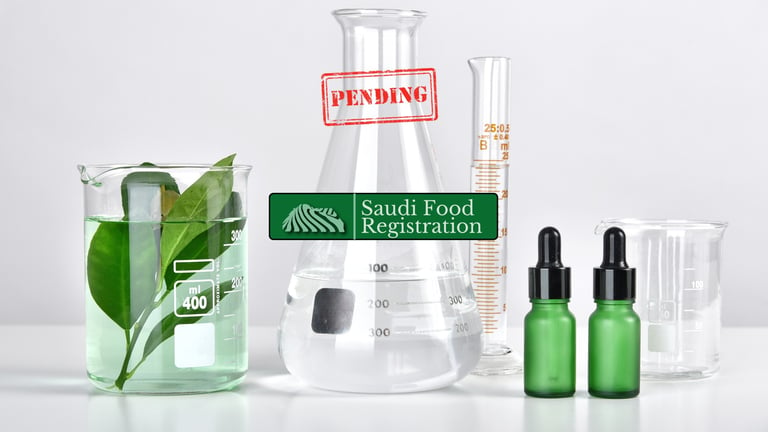Foreign Lab Reports & SFDA Rules | 2025 Compliance Guide
Using a foreign lab report for SFDA? Learn what’s accepted, when retesting is required, and how to avoid costly rejections in Saudi food registration.
6/30/20252 min read


How SFDA Verifies Foreign Laboratory Reports for Imported Products
If you’re importing food, supplements, or functional products into Saudi Arabia, you probably already know the SFDA expects rigorous testing.
But what if your lab tests were already done in your home country? Can you use those results — or will the SFDA reject them?
This is one of the most overlooked aspects of SFDA registration.
Businesses often assume their internationally certified lab reports will be accepted, only to be blindsided by last-minute rejections or retesting demands.
Understanding how SFDA treats foreign lab reports can help you avoid costly delays and wasted effort.
Let’s break it down:
Can you use a foreign lab report to register your product in Saudi Arabia?
Yes — but only under certain conditions. The SFDA (Saudi Food & Drug Authority) does accept lab test reports from outside Saudi Arabia, but only if the lab meets very specific criteria.
If your product testing was done abroad, you’ll need to prove the lab is internationally accredited, the methods used align with SFDA standards, and the report includes everything the authority expects.
What happens if your foreign lab isn’t recognized by SFDA?
Your report might be rejected — and that means either delays or having to re-test the product inside Saudi Arabia at an approved local facility.
This is one of the most common reasons for late-stage SFDA rejection, even for companies that believe they’re fully compliant.
How can you check if your foreign lab is accepted by SFDA?
Check for ISO/IEC 17025 accreditation from a recognized body.
Even better — confirm that the lab is on SFDA’s informal list of "frequently accepted" testing institutions. If in doubt, contact a regulatory expert or let Saudi Food Registration help with early-stage verification.
Does SFDA accept all ISO 17025 labs worldwide?
Not automatically. ISO 17025 is necessary — but not sufficient. SFDA will also assess:
Whether the test method matches SFDA-approved protocols
The scope of accreditation (i.e., is the lab certified for the exact type of test?)
The clarity, language, and format of the lab report
What should your lab report include to pass SFDA scrutiny?
Full product details matching the dossier
Batch numbers and sampling date
Methodology aligned with Codex/SFDA guidelines
Proper translation into Arabic (if needed)
Clear stamp, signature, and lab accreditation reference
Is retesting in Saudi Arabia mandatory?
Not always. If the SFDA is satisfied with the foreign report, it can be accepted. But if anything is missing or unclear — or if the product raises safety concerns — local testing may be required. This often depends on the product type (e.g., supplements, meat, dairy, etc.).
What types of products are most likely to require local testing?
Animal-based or Halal-sensitive foods
Health supplements with active ingredients
Novel or functional food categories
Products flagged during customs clearance
How can you avoid delays caused by foreign lab report issues?
Use labs with a history of SFDA acceptance
Pre-check reports before submission
Translate and format the report professionally
Work with experts to match SFDA expectations
Can Saudi Food Registration help?
Absolutely. We can:
Review and validate foreign lab reports
Recommend labs with SFDA recognition history
Assist with translation and formatting
Advise if local retesting is safer or faster
Need help verifying your lab report before SFDA submission?
Contact us anytime or click the chat icon in the bottom-right corner — we’re ready to guide you.
Recommended Reads:
Explore ingredient-related rules with: SFDA Additive Approval Guide
Dive into compliance foundations: SFDA Product Classification Guide
Learn how to label accurately: Allergen Labeling Requirements
If you’re already certified in another Gulf country, here’s what you need to know before submitting your documents to the SFDA.
Facing a customs delay? Here’s how to fix it fast.
